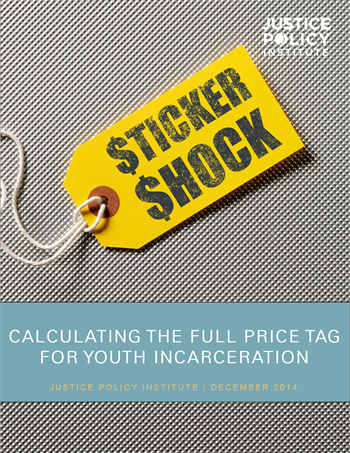Thirty-three U.S. states and jurisdictions spend $100,000 or more annually to incarcerate a young person, and continue to generate outcomes that result in even greater costs. Our new report, Sticker Shock: Calculating the Full Price Tag for Youth Incarceration, provides estimates of the overall costs resulting from the negative outcomes associated with incarceration. The report finds that these long-term consequences of incarcerating young people could cost taxpayers $8 billion to $21 billion each year.
Download
Sticker Shock: Calculating the Full Price Tag for Youth Incarceration
FACTSHEET: The tip of the iceberg: What taxpayers pay to incarcerate youth (Citations)
FACTSHEET: U.S. Youth Incarceration in an International Perspective
Media Coverage
OP-ED: Costs to Incarcerate Young People Tip of Iceberg (Juvenile Justice Information Exchange)
Capital Public Radio (Sacramento)
Northern Public Radio (Illinois)
The Times-Picayune (New Orleans)
The information contained in Sticker Shock is based on emerging and new work that seeks to quantify what the long-term costs incarceration can have on young people, taxpayers and our communities, and what action policymakers can take to reduce these costs, and help young people.
Along with Sticker Shock, JPI recommends these other additional resources to help the field build its understanding of these issues:
